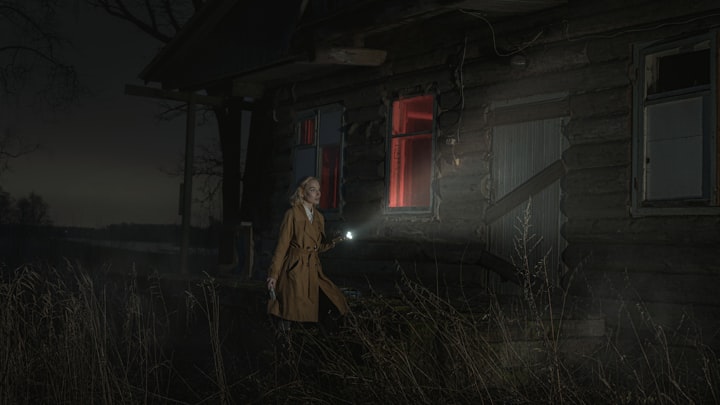The Haunting Enigma: Unsolved and Unforgotten - The Black Dahlia
Black Dahlia: A City of Angels Stained Crimson

Beneath the shimmering facade of Hollywood glamour, amidst the bustling streets of 1947 Los Angeles, a gruesome discovery sent shockwaves through the nation. In an otherwise serene park, amidst the morning mist, lay the mutilated body of a young woman - Elizabeth Short, dubbed the "Black Dahlia" by a sensationalized press. Her murder, a tapestry of brutality and enigma, remains one of the most infamous cold cases in American history, forever etched in the annals of true crime.
Elizabeth Short, born in Medford, Massachusetts, was a dreamer. With raven hair and an alluring smile, she dreamt of stardust and silver screens. Arriving in California in 1945, she pursued her aspirations, her spirit as vibrant as the crimson of her favorite lipstick. Yet, fate cast a cruel shadow. On January 15, 1947, her dreams were brutally cut short.
On that fateful morning, Betty Bersinger, a housewife, stumbled upon Elizabeth's body in Leimert Park. It was a scene ripped from a nightmare. Bisected at the waist, her body bore the marks of unspeakable savagery. Her face, tragically marred by "Glasgow smiles" - cuts extending from the corners of her lips to her ears - spoke of unimaginable torture. Drained of blood, meticulously posed, the crime scene reeked of an almost ritualistic cruelty.
News of the "Black Dahlia" spread like wildfire, ignited by the grisly details and Short's alluring image. The Los Angeles Police Department, overwhelmed by the public spectacle, launched a frenzied investigation. Hundreds of tips poured in, suspects emerged and vanished like phantoms, but the killer remained at large.
The investigation, often overshadowed by media frenzy and competing theories, proved frustratingly fruitless. Suspects ranged from jealous lovers to medical professionals, from notorious figures like Walter Freeman to the chilling "Red Lipstick Killer." However, each lead dissolved into smoke, leaving detectives and the public gasping for answers.
Forensics, in its nascent stages, offered frustratingly few clues. No fingerprints were recovered, and DNA analysis, a futuristic concept at the time, remained a science fiction dream. Despite relentless efforts, the Black Dahlia's killer remained a chilling cipher, leaving investigators and the public to dissect the case, piecing together fragments of evidence into a macabre puzzle.
One of the most enduring theories surrounds Short's acquaintance, Dr. George Hodel. His macabre medical interests, alleged ties to organized crime, and unsettling similarities to the killer's profile fueled speculation. However, despite circumstantial evidence, concrete proof remained elusive, leaving Hodel to walk free under the shadow of suspicion.
The Black Dahlia's case transcended the boundaries of a brutal murder. It became a cultural phenomenon, a twisted reflection of Hollywood's dark underbelly. It sparked anxieties about the vulnerability of young women, the perils of urban anonymity, and the seductive yet treacherous allure of the American Dream.
Books and films have attempted to capture the essence of the case, each weaving their own narrative tapestry. From James Ellroy's gritty portrayal in "L.A. Confidential" to Brian De Palma's psychological thriller "Black Dahlia," the case continues to haunt the collective imagination.
Even after seven decades, the Black Dahlia's case remains a haunting enigma. It is a stark reminder of the fragility of life, the chilling depths of human cruelty, and the enduring grip of unsolved mysteries. It is a case that begs questions about justice, closure, and the lingering shadows of unsolved crimes.
Today, a simple black dahlia adorns Elizabeth Short's grave, a silent symbol of a life tragically cut short. While the perpetrator may remain anonymous, the memory of the Black Dahlia endures, a reminder that some questions have no easy answers, that some wounds never fully heal, and that some stories, etched in blood and mystery, will forever haunt the city of angels.
The Black Dahlia's case is a testament to the human fascination with the macabre, the insatiable desire for understanding and closure. It is a cautionary tale, a reminder that beneath the surface of glittering dreams, darkness can lurk. And while the killer may walk free, shrouded in the mists of time, the Black Dahlia's haunting story continues to echo, a testament to the enduring power of the unsolved and the unforgotten.





Comments
There are no comments for this story
Be the first to respond and start the conversation.